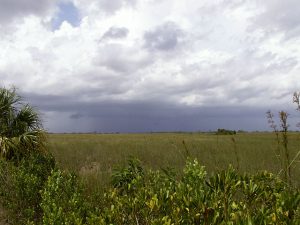Last fall Seeker.com posted an article describing the vegetation changes that are being seen in the Florida Everglades due to rising sea levels. The article notes that “Salt-loving mangroves in the Everglades have marched inland in the past decade, while freshwater plants — such as saw grass, spike rush and tropical hardwood trees — lost ground, according to a study published in the October 2013 issue of the journal Wetlands.” Southern Florida is considered to be one of the first areas to be affected by rising sea levels caused by warmer temperatures and melting ice sheets.
Physics Today also had an interesting article on sea level rise this month, this one focusing on Norfolk VA and the problems it is causing to this highly coastal community, particularly the military and commercial shipping.
In an article this week from Environment 360, Nicola Jones discussed the implications of recent research on the rate at which ice caps are melting. The most recent data suggest that the Greenland and Antarctic ice sheets are melting faster than predicted, and that could mean that sea level rise will occur faster than previously expected. Since many of our biggest cities are on coastlines, that could have big implications for local flooding as well as long-term viability of the coastal portions of those cities. The biggest unknown in looking at how ice sheets melt is how the western portion of Antarctica will behave as it warms, since much of that ice rests not on rock but is perched in areas that allow warm water to erode the ice sheet from below.
